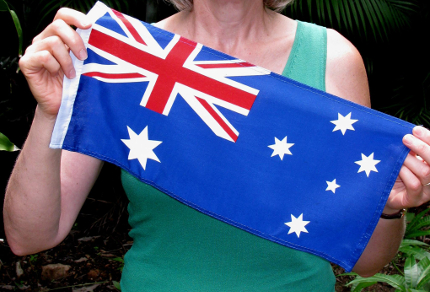Under the bald North Queensland sun, I quickly strode the half dozen blocks to the post office, pausing to drink in the sight of rainbow bee-eaters basking in morning sun and pondering the significance of war on the destiny of a nation. Australia officially became independent from Britain in 1931, following the passing of the Statute of Westminster by the British parliament.1 However, in his book A Shorter History of Australia, Geoffrey Blainey argued that it was the landing of Australian troops at the beaches of Gallipoli on Sunday, April 25, 1915, and their heroic efforts against Turkish soldiers, that truly forged Australia’s identity as a nation on the world scene.2
There had been no question that Australia and New Zealand, colonized by Britain in the late 18th and early 19th centuries, respectively, would fight alongside Britain and her allies during the First World War.3 Thus were formed the ANZAC troops, which, along with British and French troops, comprised the initial landing force on that fateful day2 now solemnly remembered in both Australia and New Zealand as ANZAC Day. Blainey wrote, “But for a nation whose troops had previously fought in no major war, the landing at Gallipoli was seen as a glorious entry on to the world’s stage. Warfare was viewed as the sportsfield where the nation with the heroic qualities was victorious. Australian soldiers filled their homefolk with pride for another reason. The nation, reluctant to accept its convict past, greeted Gallipoli as the sign that it had redeemed its beginnings and had come of age.”2
The Gallipoli campaign was an attempt by the Allied forces to gain control of the Gallipoli Peninsula and the Dardanelles, the access point to the Black Sea and to Istanbul, a strategically important capital from a military point of view.4 However, as Michael Hickey described in his book Gallipoli, the British military command did not comprehend the degree of difficulty the Allied naval and army forces would encounter in attempting to gain the peninsula,5 nor did it provide adequate intelligence for senior officers leading the expeditionary forces.6 “[General Sir Ian] Hamilton’s only intelligence consisted of a 1912 manual on the Turkish army, some old (and inaccurate) maps, a tourist guidebook and what little could be gleaned from the Turkish desk at the Foreign Office6… Considering the crucial importance of the operation, this was a hopeless briefing for a newly appointed commander-in-chief7…The maps which he [acting Colonel Sinclair-MacLagan] and all the other commanders of the landing force had been issued were obsolete and, as they did not give the names of most of the principal topographical features, of little use.”8
The topographical features of the Gallipoli Peninsula were rugged – “massif rises to a ridge that has three main spurs separated by deep gullies running down to the beach”9 – and the current off the beach stronger than expected.10 The landing force was swept a mile past the planned landing point, and at dawn, the Turks spotted the ANZACs fifty yards off the beach and opened fire. 10 That day, which had been planned as a quick, decisive strike against the Turks, turned into a military fiasco.11 “As darkness fell on the evening of the 25th the beach-head was in a state of unimaginable confusion.”11

Australian Flag (© Vilis Nams)
The Allied troops never did gain Gallipoli; they pulled out after eight months, when the strike had become a stalemate.12Almost 50,000 Allied soldiers (49,800) died on that Turkish peninsula, and of those, 8,700 were Australians.12 That is the legacy of Gallipoli, the reason why ANZAC Day – arguably Australia’s most important national day – is observed.
References:
1. Geoffrey Blainey. 2009. A Shorter History of Australia, revised and updated edition. Random House Australia Pty. Ltd., North Sydney. p. 182; 2. Ibid, p. 175.
3. Blainey, p. 174; Keith Sinclair. A History of New Zealand. 2000. Penguin Books, Auckland. p. 241.
4. Michael Hickey. 1995. Gallipoli. John Murray (Publishers) Ltd., London. p. 20; 5. Ibid, p. 28-30; 6. Ibid, p. 67; 7. Ibid, p. 68; 8. Ibid, p. 109-110; 9. Ibid, p. 110; 10. Ibid, p. 111; 11. Ibid, p. 115.
12. Blainey, p. 176.


